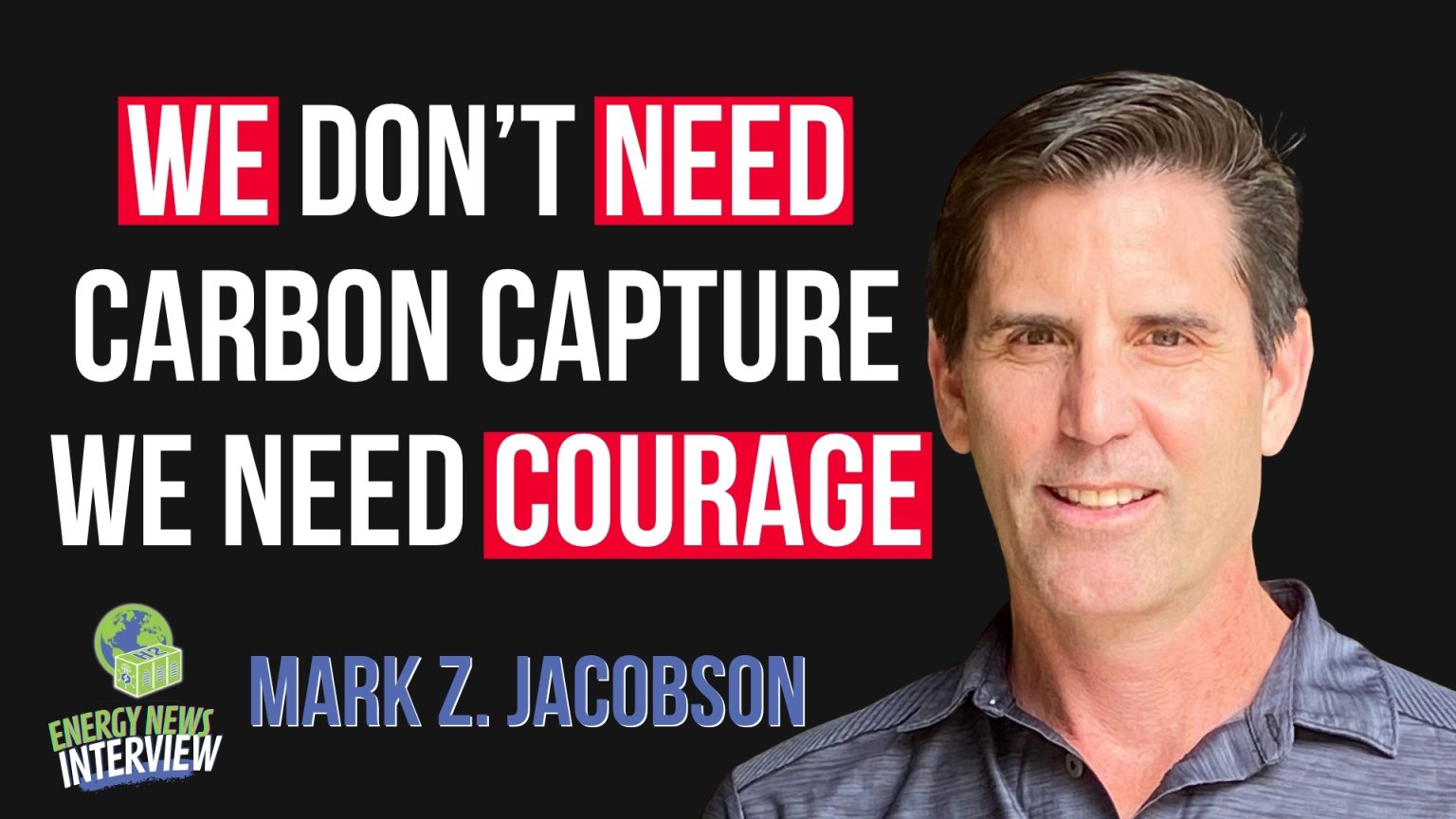Air pollution is the second leading cause of death globally, contributing to nearly 7.5 million premature deaths each year. The economic cost of this pollution is staggering — approximately $30 trillion annually, according to Stanford professor Mark Jacobson. Despite this, the global energy transition remains sluggish, hindered not by a lack of technology but by political inertia and what Jacobson categorizes as strategic distractions.
WATCH THE FULL INTERVIEW HERE
The Distraction Economy: Funding the Wrong Technologies
Jacobson’s central critique lies not in the technological capability to transition but in the political and economic misalignment of priorities. “Burning is the problem. Electrification is the solution,” he says. Yet 40% of U.S. subsidies under the Inflation Reduction Act have reportedly gone toward what he calls “useless technologies” — a list that includes carbon capture, direct air capture, blue hydrogen, and biofuels. These solutions, Jacobson argues, are not just ineffective — they are actively harmful because they divert attention and resources from proven pathways like solar, wind, and electrification.
Carbon capture, for example, is frequently marketed as essential to achieving net-zero targets. But Jacobson points out that removing a ton of CO₂ via direct air capture can require up to 6,000 kWh of energy — double the energy created when that same ton was originally emitted. Even when powered by renewables, such projects delay meaningful decarbonization by consuming clean electricity that could otherwise replace coal or gas. The result? Higher CO₂ levels, more pollution, and an ongoing dependence on fossil fuel infrastructure, especially through the expansion of CO₂ pipelines and storage sites.
The Case for Direct Electrification
In contrast to techno-futurist approaches, Jacobson promotes a straightforward roadmap: electrify all sectors — transport, buildings, industry — using technologies already available. He outlines the tools: battery electric vehicles (not hydrogen for short distances), electric heat pumps, induction cooktops, LED lighting, and energy-efficient appliances. The grid should be supplied by a mix of onshore and offshore wind, rooftop and utility-scale solar, hydro, and limited geothermal. No breakthroughs are needed — just deployment.
Jacobson’s modeling suggests that a global transition to this system would reduce total energy demand by 54%, primarily due to efficiency gains and the elimination of energy used to extract, refine, and transport fossil fuels. This translates into a 60% reduction in annual energy costs and a payback time of just six years. For social costs (factoring in health and climate), the payback is even shorter — under one year.
Global Pace: China Accelerates, U.S. Drags
Jacobson’s analysis draws sharp contrasts between countries. China, he notes, could be powered 100% by renewables across all energy sectors by 2043 if it maintains its 2025 installation pace. The country added over 240 GW of solar and wind capacity in just the first five months of the year, supported by aggressive battery and electric vehicle rollouts. Meanwhile, the United States, despite its technological edge, is on track for a complete energy transition no earlier than 2140 if current trends persist.
Even within Europe, 10 to 11 countries are outpacing China, driven by clear policy frameworks and less political resistance. Their transitions are already delivering benefits: cleaner air, job creation, and economic competitiveness. According to Jacobson, countries that act quickly will likely pressure laggards into accelerating — not through climate diplomacy, but through market advantages.
The Green Hydrogen Caveat
While Jacobson dismisses most hydrogen use cases, he concedes that green hydrogen has legitimate applications — but only in specific niches. These include ammonia production, steel manufacturing, long-distance shipping and aviation, and remote microgrids. In these contexts, hydrogen is a better option than batteries due to weight, storage, or process constraints.
However, the widespread use of hydrogen for home heating or passenger vehicles is inefficient and unnecessary. Battery electric vehicles, for instance, are three times more energy efficient than hydrogen fuel cell alternatives when powered from the same renewable source. Misapplying hydrogen, like investing in hydrogen-based home boilers, risks repeating the ethanol debacle of the early 2000s — a policy misstep Jacobson cites as a cautionary tale.
Systemic Barriers and Policy Failure
At the core of Jacobson’s argument is a systemic failure: policies that favor “all of the above” strategies. Originally embraced during the Obama administration, this approach aims to hedge bets by supporting all technologies, regardless of viability. Jacobson rejects this outright. “We know what works,” he says. “Every dollar spent on nuclear or carbon capture is a dollar not spent on wind, water, and solar.”
The issue isn’t just inefficient spending. These technologies often require decades to deliver — far beyond the timeframe necessary to avert catastrophic warming. New nuclear reactors, for instance, take 17 to 23 years to come online in most regions. With only five to ten years to address the bulk of emissions, Jacobson warns, such timelines are unworkable. Worse, they enable fossil fuel companies to delay action while continuing business as usual.
Economic and Land-Use Implications
Jacobson also dismantles the myth that renewable energy requires more land. In the U.S., fossil fuel infrastructure occupies roughly 1.3% of land area, and corn grown for ethanol takes another 1.25%. Combined, these systems serve only a fraction of total energy needs. In contrast, a 100% renewable system would use just 1% of U.S. land — and eliminate the need for both fossil fuels and bioenergy crops.
The economic rationale is equally compelling. Electrification reduces energy waste, eliminates fuel costs, and avoids volatile commodity markets. Additionally, about 11–12% of global energy is currently spent on the supply chain for fossil fuels and uranium — energy that could be saved entirely in a wind-water-solar economy.
Urgency
Jacobson’s case is not one of technological optimism, but of frustration. The tools exist. The costs are falling. The modeling is solid. What’s missing is a clear-eyed rejection of false solutions and the political will to confront incumbents. In his words: “If we care about solving the problem, we have to stop lying to ourselves.”
